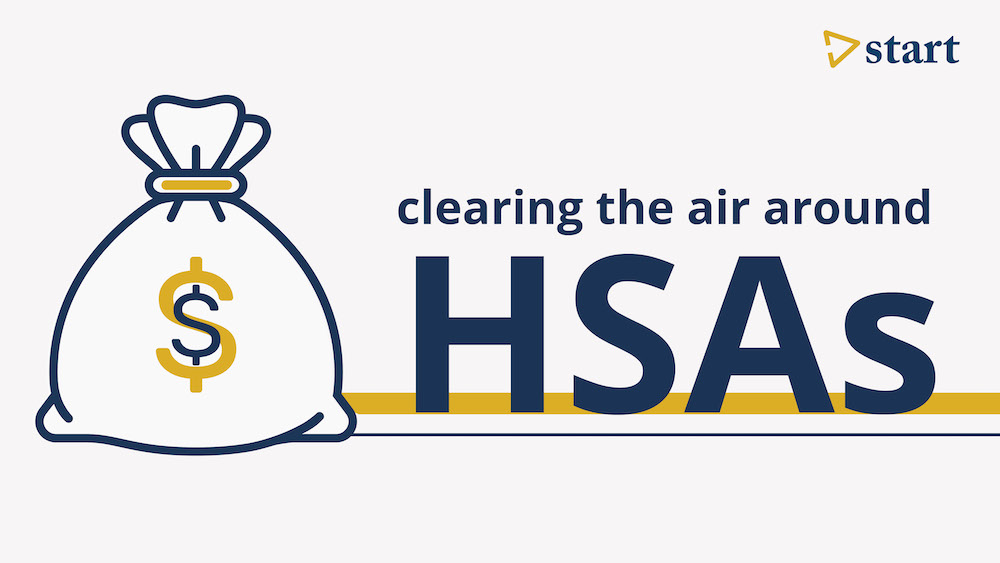
Let’s Clear the Air
HSAs are the most effective way to save for healthcare. Period. HSA adoption has certainly increased in the last decade, but employers have found that employees are more hesitant to enroll in high-deductible health plans with HSAs than they presumed. Why leave such impressive savings and tax benefits on the table? Chances are these employees have been exposed to all the HSA myths floating around. Let’s debunk them and set healthcare consumers on the pathway to healthcare reform!
Myth #1: High Deductible Plans = More Money Out of Your Pocket
HSAs are only available to those with high-deductible health plans. Believe it or not, this is a win-win.
Economist Benjamin R. Handel found that when offered the choice between a high deductible and a low deductible health plan, most Americans choose the low deductible. At first glance, “low deductible” sounds more appealing, right? Many people believe that the coverage on low deductible plans kicks in sooner. However, as inviting as “low deductible” may sound, it is important to remember that low deductible health plans go hand-in-hand with high premiums. When you pay your deductible, you are paying for healthcare that you actually receive, but when you pay for premiums, you are paying for “what-if” costs: “What if I go to the ER? What if I catch the Bubonic plague? I’d better fork out a bunch of money each month, so I know I’ll be covered in case something happens.” But how often do you actually go to the doctor? Does it really make sense to pay high premiums when you go to the doctor’s office twice a year? What if you were to pay for what you needed and keep what you didn’t spend? On top of that, once the deductible is met, high-deductible health plans typically offer better coverage than co-pay plans.
According to The New York Times:
“Economists have a term for a situation like this, where one option is better than another under any circumstances, dominance. And that is what we see in many workplaces: The cheaper healthcare plan, at every level of medical spending, often has a higher deductible.”
Long story short, though it may feel like you’re paying more with an HDHP at the beginning of the year, you’ll save significantly through lower premiums and increased coverage.
Myth #2: HSA Money Disappears After Employment Ends
Maybe you are hesitant to enroll in an HSA because you do not see your current employer as long-term—you’re worried about the money you contribute toward your HSA going to waste. Good news! HSAs are 100% transferable from one employer to the next, and their funds roll over from year to year! Enough said.
Myth #3: An HSA-Qualified Plan Means Less Benefits
Less benefits? That could not be more wrong. An HSA-qualified plan is the only plan that allows for long-term savings. As stated previously, funds are transferable and roll over from year to year. HSAs offer a triple-tax advantage: tax-free contributions, growth, and withdrawals for qualified medical expenses (and yes, these qualified expenses include optical and dental!). Once an HSA owner turns 65, HSA funds can be used for non-medical expenses, they are just taxed normally.
HSA funds can also be invested, which is an invaluable way to take advantage of their tax-free growth. Maximizing your yearly contributions and investing can set you up with quite a nest egg for retirement. We’d like to see a co-pay plan do that.
Sources:
“3 Myths Preventing Employers From Embracing HSA-Qualified Plans”